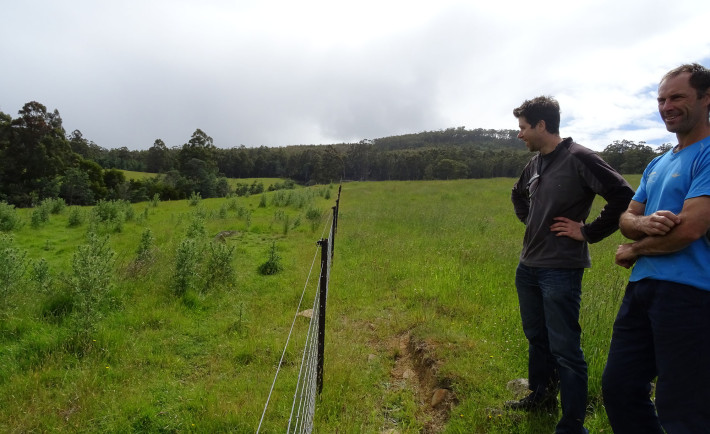Planned Grazing and Wallaby-Proof Fencing Shows Promise – More Feed, Less Weeds!
Natural Resource Management, 21/1/2015.
Results from a grazing and wallaby exclusion trial on a farm in Geeveston are showing very promising results for improving farm productivity.
Local farmer Simon Burgess is using long recovery grazing and wallaby-proof fencing to improve his pastures and reduce input costs across his farm.
A recent report on his trial funded by NRM South shows there have been some great improvements within his pastures.
Pasture improvements include a noticeable increase in ground cover of pasture grasses, with less bare ground available for weed colonisation, soil erosion and soil compaction.
There has also been an increase in decomposing litter. This is produced when paddocks are allowed to recover sufficiently and grass develops fresh litter leaves (a natural process). This organic matter is then trodden back into the paddock when the cows return to graze, helping to improve soil health and in turn increasing pasture productivity.
The photo shows an infestation of thistles in the paddock on the left hand side of the wallaby-proof fence where wallabies have access to the paddock. Wallabies have been excluded from the paddock on the right of the fence since 2013, thistles were very abundant here, but disappeared without any active weed control within two years.
The result of all these improvements ultimately means an increase in productivity. There is now considerably more feed on the ground for livestock, less need to rely on expensive soil and pasture amendments, in addition to chemical and mechanical weed control.
This trial is helping build evidence for regenerative agricultural practices and is one of several grazing trials been supported in Southern Tasmania under the RLF fund.
